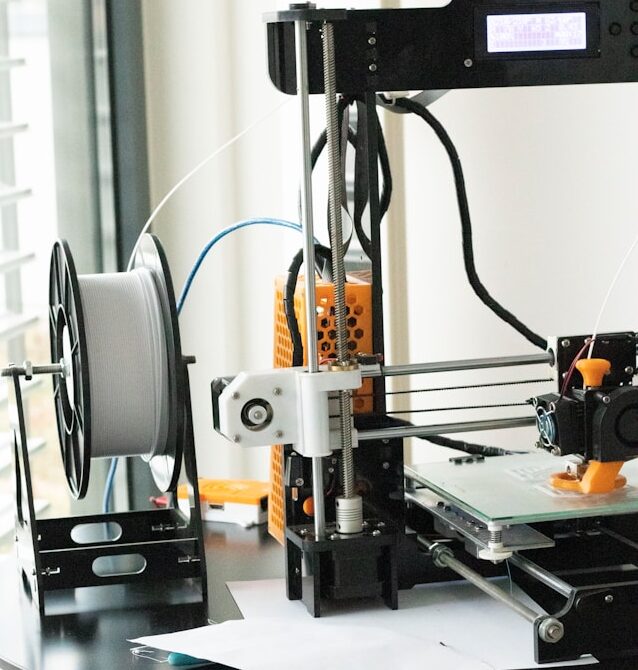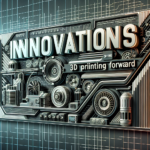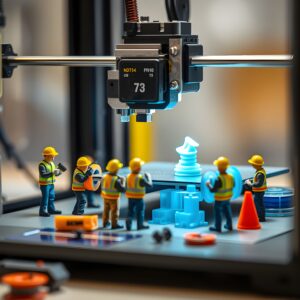Overcoming Challenges and Addressing Concerns in 3D Printing Technology

3D printing technology, also known as additive manufacturing, has become a cornerstone of modern innovation. From healthcare to aerospace, its applications continue to expand, making it a transformative tool for various industries. However, like any rapidly evolving technology, 3D printing faces challenges and concerns that can hinder its adoption and scalability. This article delves into these issues and highlights how the latest advancements in 2024 are providing solutions.
Common Challenges in 3D Printing
Material Limitations
A significant hurdle in 3D printing is the restricted range of materials available for diverse applications. Traditional options like PLA, ABS, and PETG are insufficient for high-performance needs, such as aerospace or biomedical fields.
Advancements in 2024:
-
Advanced Composites: Materials engineered to improve strength, flexibility, and thermal resistance are becoming widely available.
-
Bio-Compatible Materials: Innovations in materials for medical uses, such as implants and prosthetics, ensure patient safety and compatibility.
-
Recycled and Sustainable Options: Efforts to develop eco-friendly filaments have surged, reducing environmental impact and meeting sustainability goals.
Print Quality and Consistency
Industries such as aerospace, automotive, and healthcare demand precision, which remains a challenge due to inconsistencies in print outcomes.
Key Solutions:
-
Enhanced Calibration Systems: Improved printer designs include automated calibration to minimize errors.
-
AI Integration: AI-powered systems detect and correct potential errors during printing, ensuring high-quality results.
-
Real-Time Monitoring: Advanced sensors track print progress, alerting users to inconsistencies that require intervention.
Production Speed
Despite its advantages, the relatively slow pace of 3D printing compared to traditional manufacturing methods remains a barrier, particularly for mass production.
Technological Innovations:
-
Multi-Material Printers: Devices capable of printing multiple materials simultaneously reduce time-intensive processes.
-
High-Speed Sintering Processes: Enhanced sintering technologies significantly accelerate production.
-
Parallel Printing Technologies: By allowing multiple printers to work on different parts of a project simultaneously, production speeds have improved.
Addressing Environmental Concerns
3D printing’s environmental footprint includes energy use and waste generation, raising concerns among consumers and industries aiming for sustainability.
Sustainable Practices
Eco-Friendly Filaments: The development of biodegradable and recycled filament options has grown, providing greener alternatives to traditional plastics.
Energy Efficiency: Modern 3D printers consume less energy, often incorporating renewable energy sources to further reduce their carbon footprint.
Recycling Programs: Some manufacturers now offer recycling initiatives, enabling users to return used filaments and parts for reprocessing into new materials.
Bridging the Skill Gap
The technical expertise required to operate and maintain 3D printers has created barriers to widespread adoption, particularly for small businesses and educational institutions.
2024 Solutions
-
User-Friendly Interfaces: Simplified software interfaces and pre-configured settings make 3D printing more accessible to beginners.
-
Training Programs: Increased availability of online tutorials and certification courses equips users with the necessary skills.
-
Educational Outreach: Schools and colleges are integrating 3D printing into their curriculums, fostering early exposure and skill development.
Cost Barriers and Affordability
The high initial cost of 3D printers, coupled with the expense of specialized materials, can be prohibitive for small-scale users and hobbyists.
Making 3D Printing Affordable
-
Low-Cost Printer Models: Companies are developing budget-friendly printers without compromising quality, targeting small businesses and individuals.
-
Affordable Materials: Ongoing research into alternative materials has reduced costs while maintaining performance.
-
Subscription Services: Industrial-grade printing services on a subscription basis allow businesses to access high-end technology without significant upfront investments.
Innovations Driving 3D Printing Forward
AI Integration
Artificial intelligence continues to revolutionize 3D printing, improving efficiency and reducing errors.
-
Optimized Design: AI tools assist in creating structurally sound designs while minimizing material usage.
-
Error Prediction: AI systems identify potential issues in designs and processes before production begins.
-
Maintenance Optimization: Predictive algorithms schedule maintenance, reducing downtime and costs.
Hybrid Manufacturing
By combining traditional and additive manufacturing, hybrid methods leverage the strengths of both approaches.
-
Structural Robustness: Traditional techniques reinforce components produced through 3D printing.
-
Faster Production Cycles: Hybrid systems streamline the production process, making them suitable for mass production.
Healthcare Applications
The healthcare industry has seen remarkable innovations due to 3D printing, particularly in the production of customized prosthetics and implants.
-
Patient-Specific Implants: Advanced imaging techniques allow for the creation of implants tailored to individual patients.
-
Biodegradable Materials: Research into materials that dissolve safely within the body post-treatment continues to expand possibilities.
Future Prospects and Recommendations
The future of 3D printing depends on collaboration among stakeholders, including manufacturers, researchers, and policymakers. Key focus areas include:
-
Sustainability: Continued investment in green technologies and recycling initiatives will make 3D printing more eco-friendly.
-
Global Standards: Establishing international guidelines for quality and safety will facilitate broader adoption.
-
Public-Private Partnerships: Encouraging partnerships will drive innovation and provide funding for large-scale projects.
While 3D printing faces challenges, the advancements in 2024 underscore its potential to revolutionize industries. By addressing material limitations, improving quality, increasing speed, and making the technology accessible and sustainable, 3D printing is poised to shape the future of manufacturing and innovation. As collaboration and innovation continue, the technology’s capabilities will only grow, opening new doors for creativity and efficiency.
FAQs
Q1: What are the primary challenges in 3D printing? A: Material limitations, print quality, production speed, environmental impact, skill gaps, and cost barriers.
Q2: How is the environmental impact of 3D printing being addressed? A: Through eco-friendly filaments, energy-efficient printers, and recycling programs.
Q3: What industries benefit most from 3D printing? A: Industries like healthcare, aerospace, automotive, and education gain significantly from 3D printing applications.
Q4: How is AI enhancing 3D printing processes? A: AI optimizes designs, predicts errors, and improves maintenance, leading to greater efficiency and reliability.
Q5: What are hybrid manufacturing methods? A: These methods combine 3D printing with traditional manufacturing to enhance structural strength and speed up production.
Visit our other website: https://synergypublish.com





